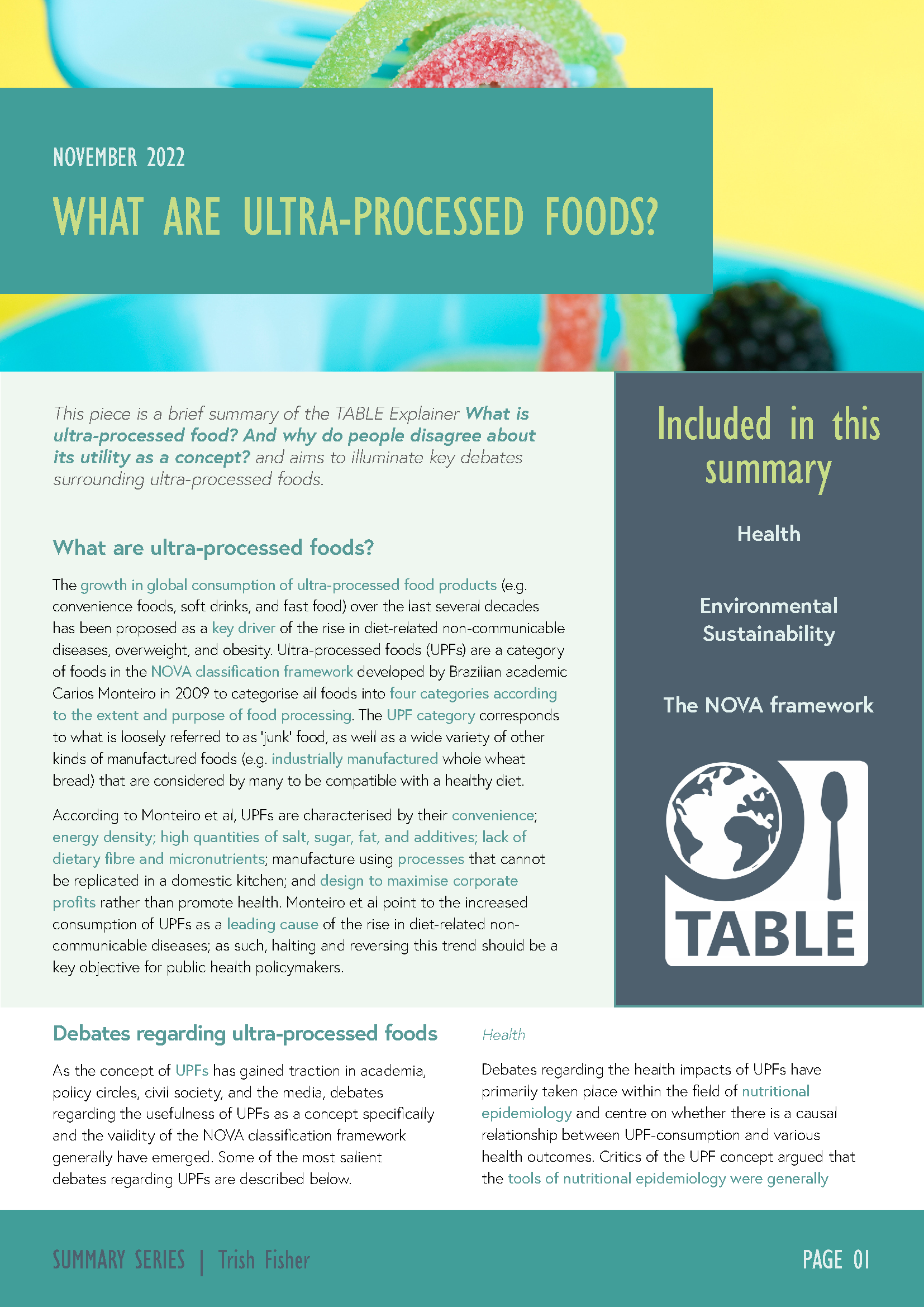Debates regarding ultra-processed foods
As the concept of UPFs has gained traction in academia, policy circles, civil society, and the media, debates regarding the usefulness of UPFs as a concept specifically and the validity of the NOVA classification framework generally have emerged. Some of the most salient debates regarding UPFs are described below.
Health
Debates regarding the health impacts of UPFs have primarily taken place within the field of nutritional epidemiology and centre on whether there is a causal relationship between UPF-consumption and various health outcomes. Critics of the UPF concept argued that the tools of nutritional epidemiology were generally inadequate for measuring the extent of food processing and thus demonstrating causal relationships between UPFs and health. However, recent randomised controlled trials conducted by Hall et al demonstrate that UPF- consumption stimulates excess calorie consumption, thus pointing to a potential causal mechanism. Other hypotheses explaining the causal relationship between UPF-consumption and negative health outcomes include the Carbohydrate-Insulin Model and the energy intake rate hypothesis.
Environmental Sustainability
Although there has been little research on the environmental impacts of UPFs, Monteiro et al argue that UPFs are interlinked with unsustainable forms of intensive agriculture whereas minimally processed foods are often produced on small farms in environmentally benign ways. Several life-cycle analyses have found that UPFs have 30-50% higher greenhouse gas (GHG) emissions than similar home-made meals. However, there are a number of questions regarding the validity of these assertions. First, crops produced for consumption as minimally processed foods (e.g. fresh fruits and vegetables) do not necessarily generate fewer direct environmental impacts than crops destined for use in UPFs. Furthermore, like UPFs, minimally processed foods tend to have high GHG emissions associated with import, long cold-chains, and packaging, especially in the Global North. A further complication is that consumers are unlikely to directly substitute home-made options for UPF-equivalents and vice versa. In some cases, UPFs may actually contribute to reduced food waste due to their longer shelf life and pre-apportionment. Perhaps the largest gap in the NOVA framework is that meat and dairy products, many of which are minimally processed foods, also have significant environmental impacts. As such, the case of meat and dairy undermines the NOVA framework’s proposed correlation between minimal processing and low environmental impact.
Overall usefulness of the NOVA framework
Proponents of the NOVA classification framework believe that how the framework divides all food into four broad categories sheds light on general trends that point to the role and responsibility of segments of the food industry in undermining healthy, sustainable diets. It shifts the focus from whether an individual food product is healthy based on its nutrient profile, towards thinking about food’s role in a person’s diet, local food cultures, and the broader food environment.
Critics argue that the NOVA framework is imprecise and question whether the framework contributes much to well understood relationships between health outcomes and diets high in salt, sugar, and fat. The debate surrounding the usefulness of the NOVA framework essentially boils down to whether or not food processing inherently has a causal relationship with negative health and environmental outcomes and thus should be the target of public health policymaking efforts.







Comments (0)